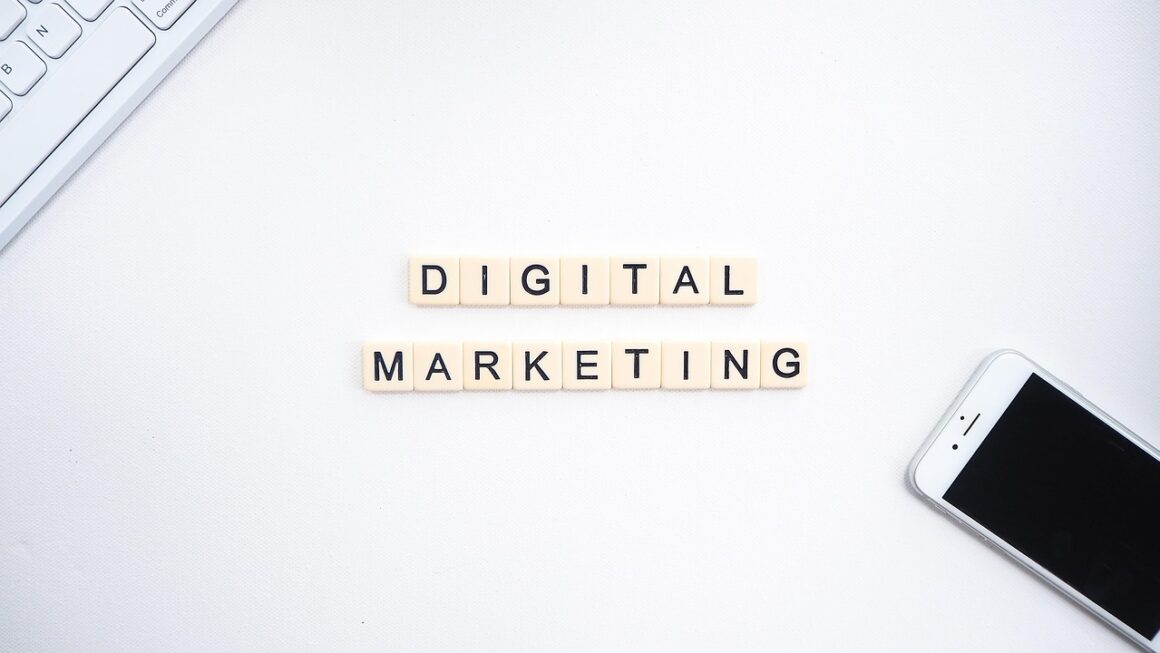Imagine you’ve meticulously crafted the perfect marketing campaign, driven traffic to your website, and…crickets. Visitors browse, add items to their carts, and then vanish into the digital ether. Frustrating, right? That’s where AI remarketing tools swoop in, offering a smarter, more efficient way to recapture lost leads and convert potential customers into loyal buyers. These tools leverage the power of artificial intelligence to personalize ads, optimize bidding strategies, and ultimately, boost your return on investment (ROI). Let’s dive into the world of AI-powered remarketing and explore how it can transform your marketing efforts.
What are AI Remarketing Tools?
Defining AI Remarketing
AI remarketing tools are platforms and software that utilize artificial intelligence and machine learning algorithms to improve the effectiveness of remarketing campaigns. Traditional remarketing relies on broad segmentation and retargeting based on website behavior. AI takes this a step further by analyzing vast amounts of data to predict user intent, personalize ad creatives, and optimize campaign performance in real-time.
How AI Enhances Traditional Remarketing
AI brings several key advantages to the table compared to traditional methods:
- Personalization at Scale: AI can analyze individual user behavior to create highly personalized ad experiences, showing products they’ve specifically viewed or content they’ve interacted with.
- Predictive Bidding: AI algorithms can predict the likelihood of conversion for each user and adjust bids accordingly, maximizing your ad spend efficiency.
- Dynamic Creative Optimization (DCO): AI can automatically generate and test different ad variations (headlines, images, call-to-actions) to identify the best-performing combinations for each user segment.
- Advanced Segmentation: AI goes beyond basic demographic and behavioral data to create micro-segments based on purchase history, browsing patterns, and even predicted future behavior.
- Cross-Channel Optimization: AI can analyze user behavior across multiple channels (website, email, social media) to deliver a consistent and relevant message, regardless of where the user is.
Examples of AI Remarketing in Action
- Abandoned Cart Recovery: A user adds items to their online shopping cart but doesn’t complete the purchase. An AI-powered remarketing tool can trigger a personalized ad featuring the exact items in their cart, along with a discount or free shipping offer to incentivize them to complete the purchase.
- Product Recommendation Engines: Based on a user’s browsing history and past purchases, AI can recommend relevant products in remarketing ads, increasing the likelihood of a purchase.
- Lead Nurturing: For B2B companies, AI can analyze lead behavior to determine their stage in the sales funnel and deliver targeted content in remarketing ads to move them closer to conversion.
Benefits of Using AI Remarketing
Increased Conversion Rates
The personalized and targeted nature of AI remarketing leads to higher conversion rates. By showing users ads that are relevant to their interests and needs, you increase the chances of them clicking through and making a purchase. Statistics show that personalized ads have a significantly higher click-through rate (CTR) than generic ads.
Improved ROI
AI-powered bidding and optimization ensure that your ad spend is used effectively. By focusing on users who are most likely to convert, you can maximize your ROI and generate more revenue with the same budget.
Enhanced Customer Experience
AI remarketing allows you to deliver a seamless and personalized customer experience. By showing users relevant ads and content, you can build trust and loyalty, leading to long-term customer relationships.
Time and Resource Savings
AI automation reduces the manual effort required to manage remarketing campaigns. AI algorithms can handle tasks such as bid optimization, ad creative testing, and audience segmentation, freeing up your team to focus on other strategic initiatives.
Examples of ROI Improvement
A retail company implemented AI remarketing to target users who viewed specific product categories on their website. By showing personalized ads featuring those products, they saw a 30% increase in conversion rates and a 20% improvement in ROI compared to their previous remarketing campaigns. A B2B software company used AI to identify leads who were actively researching solutions similar to theirs. By delivering targeted content and demos in remarketing ads, they saw a 50% increase in qualified leads and a 25% faster sales cycle.
Key Features to Look for in AI Remarketing Tools
Dynamic Ad Creative Optimization (DCO)
A core feature of AI remarketing is the ability to automatically generate and test different ad variations.
- Headline Testing: The tool should be able to test different headlines to see which ones resonate best with specific user segments.
- Image Optimization: It should be able to optimize image selection based on user behavior and preferences.
- Call-to-Action Testing: The tool should be able to test different call-to-actions to identify the most effective ones.
- Format and Layout Variations: Testing different ad layouts and formats to maximize engagement.
Predictive Bidding
AI should intelligently manage your bids to maximize ROI.
- Real-time Bidding: The tool should be able to adjust bids in real-time based on user behavior and market conditions.
- Conversion Probability: It should be able to predict the likelihood of conversion for each user and bid accordingly.
- Budget Allocation: AI should dynamically allocate your budget to the campaigns and ad groups that are performing best.
Audience Segmentation and Targeting
Advanced segmentation capabilities are crucial for reaching the right users.
- Behavioral Segmentation: The tool should be able to segment users based on their website behavior, such as pages viewed, products added to cart, and time spent on site.
- Demographic Segmentation: It should be able to segment users based on demographic data, such as age, gender, location, and income.
- Psychographic Segmentation: Ideally, it can infer user interests and values based on their online behavior to create even more targeted segments.
- Custom Audience Creation: The ability to upload your own customer data to create custom audiences for remarketing.
Cross-Channel Integration
A comprehensive tool should integrate seamlessly with different marketing channels.
- Google Ads Integration: Deep integration with Google Ads for managing search and display remarketing campaigns.
- Social Media Integration: Integration with social media platforms like Facebook, Instagram, and LinkedIn for social remarketing.
- Email Marketing Integration: Integration with email marketing platforms to deliver personalized email remarketing campaigns.
Reporting and Analytics
Detailed reporting is essential for tracking performance and making data-driven decisions.
- Conversion Tracking: Accurate tracking of conversions and revenue generated from remarketing campaigns.
- Attribution Modeling: The ability to attribute conversions to different touchpoints in the customer journey.
- Performance Dashboards: User-friendly dashboards that provide a clear overview of campaign performance.
- A/B Testing Results: Clear reporting on the results of A/B tests to identify the best-performing ad variations.
Implementing AI Remarketing: Best Practices
Define Clear Goals and Objectives
Before implementing AI remarketing, it’s important to define your goals and objectives.
- Increase Website Traffic: Drive more traffic to your website by targeting users who have previously visited.
- Generate Leads: Capture leads by offering valuable content in remarketing ads.
- Boost Sales: Increase sales by targeting users who have shown interest in your products or services.
- Improve Customer Retention: Retain existing customers by offering personalized promotions and incentives.
Segment Your Audience Effectively
Proper segmentation is crucial for delivering relevant ads.
- Website Visitors: Target users who have visited specific pages on your website.
- Abandoned Cart Users: Target users who have added items to their cart but haven’t completed the purchase.
- Past Customers: Target past customers with personalized offers and promotions.
- High-Value Customers: Segment customers based on their lifetime value and offer them exclusive deals.
Personalize Your Ad Creatives
Personalization is key to driving conversions.
- Use Dynamic Product Ads: Show users the exact products they’ve viewed on your website.
- Offer Personalized Discounts: Provide discounts based on user behavior and preferences.
- Create Targeted Content: Deliver content that is relevant to the user’s interests and needs.
- A/B Test Ad Variations: Continuously test different ad variations to identify the best-performing ones.
Optimize Your Bidding Strategy
Intelligently manage your bids to maximize ROI.
- Use Automated Bidding: Leverage AI-powered bidding algorithms to optimize your bids in real-time.
- Set Conversion Goals: Define your conversion goals and let the AI optimize your bids accordingly.
- Monitor Performance: Continuously monitor your campaign performance and adjust your bidding strategy as needed.
Track and Analyze Results
Regularly track your results and make data-driven decisions.
- Track Conversions: Monitor the number of conversions generated from your remarketing campaigns.
- Analyze ROI: Calculate the ROI of your remarketing efforts to determine their effectiveness.
- Identify Areas for Improvement: Identify areas where you can improve your campaigns and optimize your results.
Conclusion
AI remarketing tools represent a significant leap forward in the world of digital marketing. By leveraging the power of artificial intelligence, you can personalize ads, optimize bidding strategies, and ultimately, achieve higher conversion rates and improved ROI. While implementing AI remarketing requires careful planning and execution, the potential benefits are undeniable. By following the best practices outlined in this guide, you can unlock the full potential of AI remarketing and take your marketing efforts to the next level. It’s time to harness the power of AI and transform those lost leads into loyal customers!




